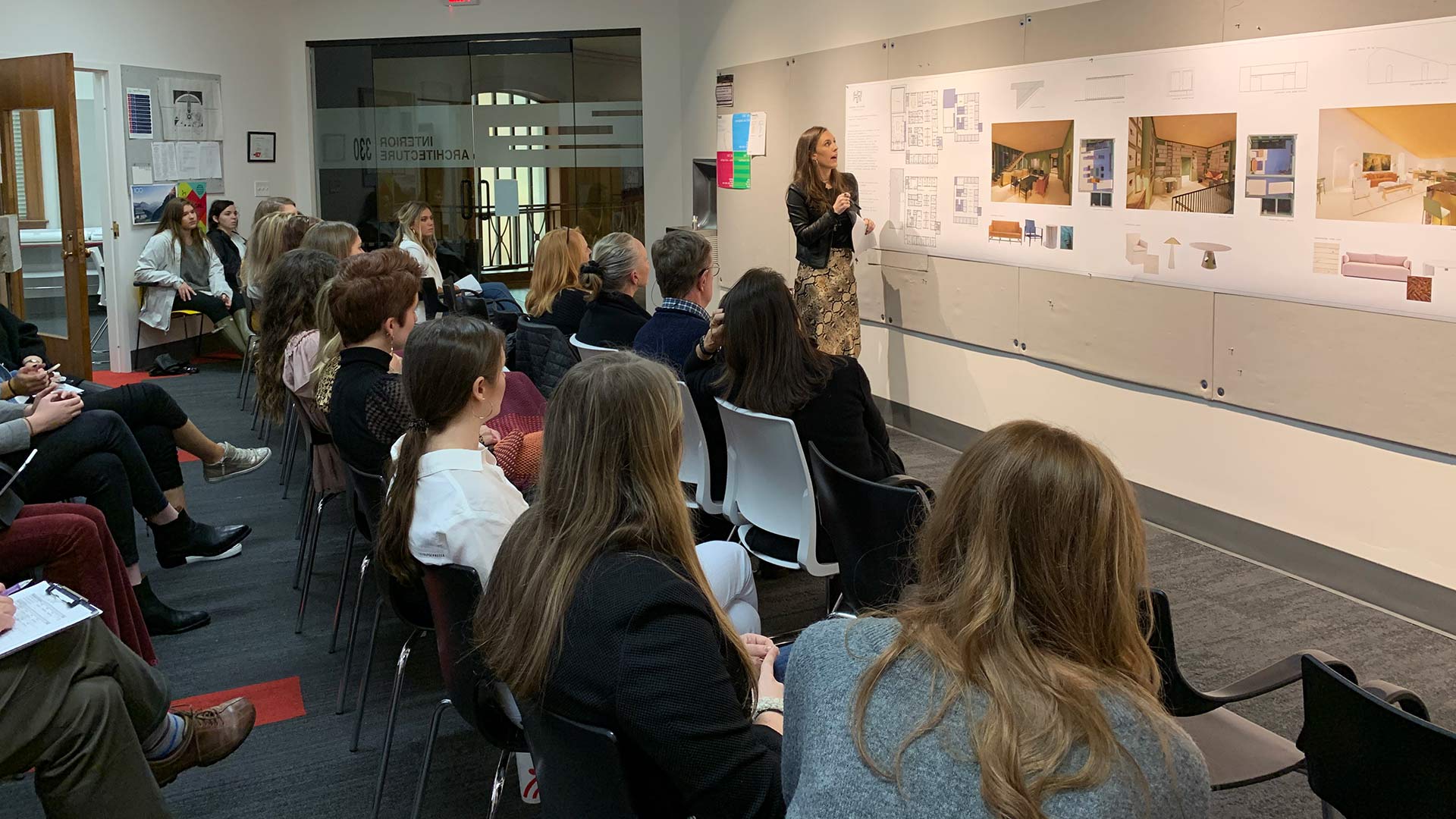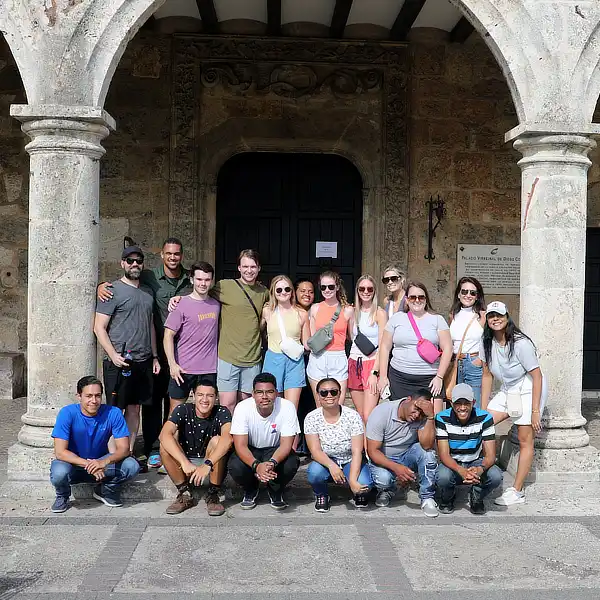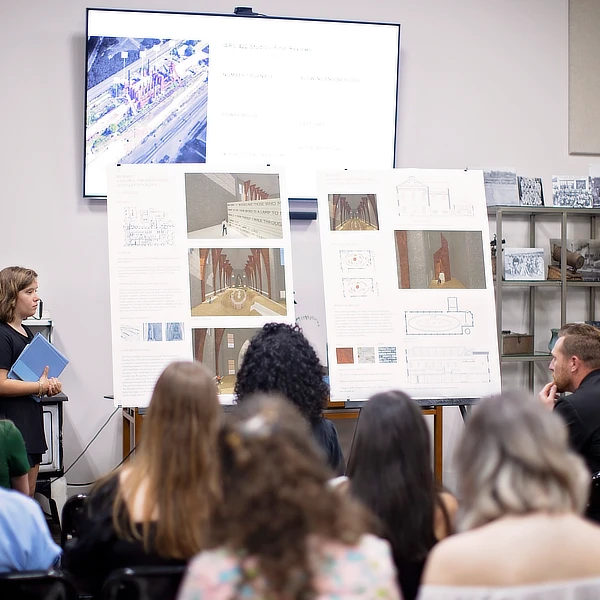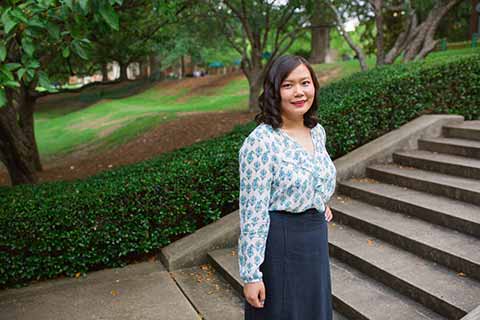Accelerated Master of Architecture (MArch) | Samford University School of the Arts

Architecture is science, technology, geography, typography, anthropology, sociology, art and history. —Renzo Piano, architect and designer
Is This Program for Me?

“I started as an interior design major but switched to architecture when it became available at Samford.
“Samford’s program is more arts over math oriented, challenging me creatively in an atmosphere of healthy competition and growth through the art process. I really like the idea of being able to look and be inside a building that I created and to leave an impression on the world through my design.”
What Makes Us Different?

Service
The architecture degree at Samford will encourage students to see the world differently and to use their talents to enhance the community around them. From service opportunities both locally and abroad, to awareness of the public good, students learn to improve the lives of others through a built environment.
Integrated Learning
Professional Access and Development
What Will I Learn?

Courses Include
- design fundamentals and design principles across eight semesters of design studio courses
- building systems and sustainable design
- materials and methods used in design and construction
- structures
- design and digital communication
- architecture history & theory
- electives and special topics related to the architecture and design field
- professional business practices
- faith and profession

Experiences

Professional Development

Career Preparation
Upon NAAB accreditation, the Master of Architecture will be a professional degree and fulfill the education requirement for architectural licensure in all US jurisdictions.
In addition to a career in architecture, a degree in architecture equips students for success in other design related fields, such as landscape architecture, urban planning, industrial designer, furniture designer, sustainable design consultant, facilities manager, and many others. The Master of Architecture is also considered a terminal degree in most institutions of higher learning which, in addition to professional practice, allows graduates to pursue a career in academia.
Accreditation
The new Samford University Architecture Program is currently seeking accreditation by the National Architectural Accrediting Board (NAAB). Initial accreditation is anticipated in Spring 2027.
NAAB Statement
In the United States, most registration boards require a degree from an accredited professional degree program as a prerequisite for licensure. The National Architectural Accrediting Board (NAAB), which is the sole agency authorized to accredit professional degree programs in architecture offered by institutions with U.S. regional accreditation, recognizes three types of degrees: the Bachelor of Architecture, the Master of Architecture, and the Doctor of Architecture. A program may be granted an eight-year term, an eight-year term with conditions, or a two-year term of continuing accreditation, or a three-year term of initial accreditation, depending on the extent of its conformance with established education standards. Doctor of Architecture and Master of Architecture degree programs may require a non-accredited undergraduate degree in architecture for admission. However, the non-accredited degree is not, by itself, recognized as an accredited degree.”
The NAAB grants candidacy status to new programs that have developed viable plans for achieving initial accreditation. Candidacy status indicates that a program expects to achieve initial accreditation within six years of achieving candidacy, if its plan is properly implemented.
In order to meet the education requirement, set forth by the National Council of Architectural Registration Boards, an applicant for an NCARB Certificate must hold a professional degree in architecture from a program accredited by the NAAB; the degree must have been awarded not more than two years prior to initial accreditation. However, meeting the education requirement for the NCARB Certificate may not be equivalent to meeting the education requirement for registration in a specific jurisdiction. Please contact NCARB for more information.
Samford University, Department of Architecture & Interior Design was granted candidacy status for the following professional degree program(s) in architecture: Master of Architecture (130 undergraduate credit hours + 38 graduate credit hours)
Year candidacy awarded: Initial Candidacy Spring 2023
Next visit: Continuation of Candidacy Fall 2024
Projected year to achieve initial accreditation: Spring 2027
Earliest graduation date projected to meet NCARB education requirement: Fall 2026
Application Information
Freshman applications for next fall are open.Freshman Early Action applications close November 1st.The freshman first scholarship deadline is December 1st.Transfer applications for the spring semester close Dec. 15.Freshman FAFSA priority and scholarship deadlines are Feb. 15.Decision day is coming! Freshman applications for fall enrollment close May 1st.Transfer applications for fall enrollment close July 1st.Freshman applications for fall enrollment are closed. Applications for next year open August 1st.Transfer applications for fall enrollment are closed. Applications for next year open September 1st.
Explore the Classes
Cookie Preferences | Privacy Policy | Software Plugins
Microsoft Excel®
Microsoft Power Point®
Microsoft Word®
Adobe Portable Document Format








